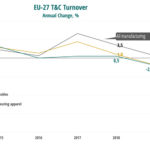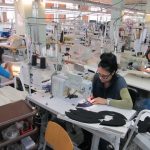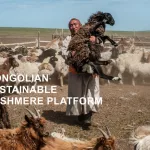 Generally, the textiles and clothing (T/C) industry is regarded as a “low tech” sector. If we just try to explore this subject little deeper, we will realize that this impression is not unfounded. Overall, we see a pessimistic picture of the future of this sector when we analyze the industry’s performance in terms of R&D activity being carried out and number of patents or other intellectual property being filed or created. The average skill level of employees in the sector – in most textile and clothing producing countries – is also found to be lacking when it comes to the use of high-tech machineries and processes. In-house development of new products and processes is very rare. There is no doubt that the innovation performance of the T/C sector at the aggregate level is indeed below manufacturing average. Innovations mainly come from supplier industries like dyes and chemicals, machinery manufacturers and to some extent, fibre manufacturers. The textile and clothing companies have hardly any in-house R&D.There is not even much innovation co-operation in the sector. There is an overall reluctance in acquiring or adapting external high-tech innovations, too, especially in the initial stages when risks are considered to be apparently high. A very small number of firms in the T/C industry are R&D-oriented and have links to external sources of knowledge. They invest a considerable share of their turnover in innovation projects similar to firms in “high-technology” sectors.
Generally, the textiles and clothing (T/C) industry is regarded as a “low tech” sector. If we just try to explore this subject little deeper, we will realize that this impression is not unfounded. Overall, we see a pessimistic picture of the future of this sector when we analyze the industry’s performance in terms of R&D activity being carried out and number of patents or other intellectual property being filed or created. The average skill level of employees in the sector – in most textile and clothing producing countries – is also found to be lacking when it comes to the use of high-tech machineries and processes. In-house development of new products and processes is very rare. There is no doubt that the innovation performance of the T/C sector at the aggregate level is indeed below manufacturing average. Innovations mainly come from supplier industries like dyes and chemicals, machinery manufacturers and to some extent, fibre manufacturers. The textile and clothing companies have hardly any in-house R&D.There is not even much innovation co-operation in the sector. There is an overall reluctance in acquiring or adapting external high-tech innovations, too, especially in the initial stages when risks are considered to be apparently high. A very small number of firms in the T/C industry are R&D-oriented and have links to external sources of knowledge. They invest a considerable share of their turnover in innovation projects similar to firms in “high-technology” sectors.
It is very simple to explain why T/C sector firms have the weak track record with regard to R&D and innovation performance. The average firm size is small. They have poor access to financial resources. They also have lack of qualified personnel and are not capable to transfer research or innovation into products, even if it is out-sourced.
Another important feature of the T/C industry is that the competitiveness of firms in this sector, to a large extent, is based on non-technological factors such as price, delivery, credit allowed and so on. This also puts them off when it comes to investing in R&D or for acquiring talent or innovation.
Hoever, the positive side of the T/C industry includes strong entrepreneurship qualities and eagerness to grow fast. It is hoped that this coupled with globalisation will provide them incentives to invest in R&D, advanced production technologies and new emerging organisational concepts that include social and ecological aspects. It is also expected that new technological developments in the areas such as technical textiles, intelligent clothing and smart materials will provide ample opportunities for the T/C industry to grow and prosper.
The use of new or significantly advanced methods of production as well as of new organisational systems are expected to considerably contribute to efficiency gains for the T/C industry. This will also help it to reduce the dependance on low-skilled manual labour and probably bring the industry out of the “low tech” tag.
G.D. JASUJA
Managing Editor





